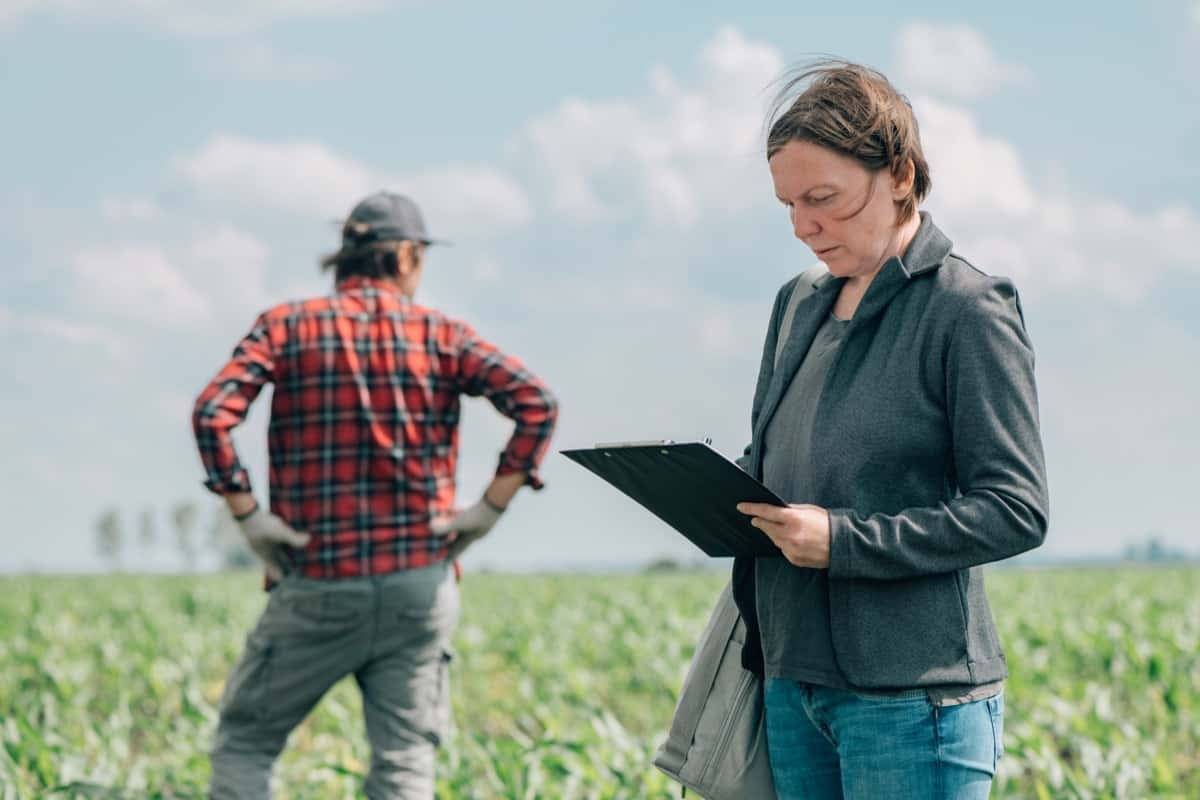According to the Pradhan Mantri Fasal Bima Yojana (PMFBY), Telangana, Gujarat, and Jharkhand have the highest crop insurance premiums. State governments implement crop insurance schemes with the help of shared funds from the Centre, which has clearly stated it will not cover all premiums since several states failed to fulfill their commitments.

According to the scheme, farmers must contribute their premiums based on the crop type. In the case of commercial crops, the percentage will be five percent per acre, while in the case of food crops, it will be two percent.
How to Apply For Crop Insurance in Telangana
Objectives Behind Providing Crop Insurance
- Providing financial assistance to farmers who have suffered crop losses/damages as a result of unforeseen circumstances
- Stabilizing farmers’ incomes to ensure their sustainability
- Aiming to encourage farmers to adopt innovative and modern agricultural practices
- Assuring the flow of credit to the agriculture sector will contribute to food security and crop diversification, enhance growth and competitiveness, and protect farmers against production risks.
How Government Support and Implement PMFBY in Telangana
The RWBCIS is available to all farmers who grow notified crops in notified areas, including sharecroppers and tenants. As a result of adverse weather conditions related to rainfall, temperature, wind, humidity, etc., it intends to mitigate the hardships of the insured farmers against financial loss resulting from crop loss. Associated with the Telengana State Government, the scheme is implemented in Telengana.
The minimum premium charged by farmers (2% for food crops, cereals, pulses, and oilseeds, and 5% (or the rate quoted by the insurance company, whichever is less) for commercial/horticultural crops) is subsidized, and the remaining share is borne by the central and state governments equally. Telangana’s Insurance unit considers major and minor crops as Mandals under the scheme based on a weather index. For the Kharif season, the following crops have been notified in Telangana’s districts
- Jagtial: Rice, Green Gram (Moong), Maize (Makka), Pigeon Pea (Red Gram/Arhar/Tur), Soybean (Bhat), Turmeric.
- Jangaon: Rice, Green Gram (Moong), Maize (Makka), Pigeon Pea (Red Gram/Arhar/Tur)
- Karimnagar: Rice, Maize
- Peddapalli: Rice, Maize
- Rajanna Siricilla: Rice, Maize
Application Procedure to get Crop Insurance in Telangana
Apply In-Person
- A crop insurance application form is available on the Telangana agriculture department’s website
- An applicant approaches the agriculture department and gets an application form for the WBCIS (World Bank Crop Insurance Scheme).
- An applicant must fill out the application form completely.
- Please ensure you carry all the required documents in the “Required Documents” section. It is important to have both photocopies and originals.
- While applying, the applicant should include photocopies of all necessary documents (whichever is necessary) and the application form.
- A fee must be paid according to the authority’s request for this procedure.
- Crop insurance would be provided if the above-mentioned procedures were followed.
- Generally, this procedure takes 30-45 days to complete.
- Once the notification is received, the applicant can collect their insurance by visiting the office.
In case you missed it: Private Crop Insurance Companies in India

Apply Online
- For online crop insurance applications, please visit www.pmfby.gov.in
- Please click the icon “Farmer Corner” on the homepage.
- If you already have an account, please click the “Login for Farmer” button and log in with your mobile number. You can also click on the “Guest Farmer” button if you do not have an account.
- The “Register for New Farmer User” application form must be filled out completely.
- Click “Create User” once you have entered the CAPTCHA.
- Please follow the prompts on the page, fill in all the required information, and click “Next.”
- Click the “Next” button after entering your “Bank Details.”.
- The “Crop Details” page should be filled out and all necessary documents uploaded.
- Then, click “Submit” to register after you have filled in all the details.
- Click the “Make Payment” button on the payment page and enter your card information.
- The registration process will be over after the payment is received.
- Your credentials will be sent to you once you have successfully registered via SMS and email.
- After registering, return to the homepage.
- The Farmer Corner icon can be found by clicking the “Farmer Corner” icon.
- The next page will ask for your mobile phone number and the CAPTCHA. Click “Request or OTP.”.
- The crop insurance application should be completed and submitted after entering the OTP.
- A receipt number will be emailed to you once your application has been submitted.
- Your application status can be found by visiting the same link
- You can verify the status of your application on the homepage by clicking the “Application Status” icon.
- Click on the “Check Status” button after entering the “Receipt Number” and “Captcha Code.” Your application will then be displayed.
Required Documents for Applying for Crop Insurance
- Application form
- Annual income certificate
- Bank account number
- Ration card
- Evidence of land records (Records of Right (ROR)
- ID proof(Aadhaar card)
- Sowing information
- Address proof(Ration card/Rental agreement)
- Land possession certificate(LPC)
- Applicable contract
- Agreement details
- Other documents notified
- Permit by concerned state Govt.
Coverage of Risks and Exclusions in Crop Insurance
The scheme covers the following stages of crop risks leading to crop loss. The addition of new risks by the State Govt, other than the one mentioned below, by the State Govt. is not permitted.
- Prevented Sowing/Planting/Germination risk: The insured area cannot sow/plant/germinate due to a lack of rainfall or adverse seasonal/weather conditions. A 25% payment will be made, and the policy will be canceled.
- Standing crop (Sowing to harvesting): A comprehensive risk insurance policy covers yield losses resulting from nonpreventable risks, such as droughts, dry spells, floods, inundations, widespread pest and disease attacks, landslides, fires caused by natural causes, lightning, storms, hailstorms, and cyclones.
- Post-harvest losses: Coverage is available only upto a maximum period of two weeks from harvesting for crops that must be dried in cut and spread or small bundled condition in the field after harvesting against specific perils such as hailstorms, cyclones, cyclonic rains, and unseasonal rains.
- Localized calamities: Loss/damage to notified insured crops caused by hailstorms, landslides, flooding, cloud bursts, and natural fires caused by lightning that affect isolated farms in the notified area.
- Add-on coverage for crop loss due to wild animal attacks: The States may consider providing add-on coverage wherever the risk is considered substantial and identifiable.
In case you missed it: Comprehensive Crop Insurance Scheme in India: Eligibility and Benefits

Conclusion
The state of Telangana probably plans to rejoin the PMFBY (Pradhan Mantri Fasal Bima Yojana) after opting out because of its high premium subsidy. As part of the heavily subsidized PMFBY, farmers must pay a premium of just 1.5% for rabi crops, 2% for Kharif crops, and 5% for cash crops. The Centre and states equally share the balance premium, and for the northeastern states, it is split 9:1 between the Centre and states.
- Feed Your Flock for Less: Top 10 Tips to Save on Chicken Feed
- Ultimate Guide to Ossabaw Island Hog: Breeding, Raising, Diet, and Care
- Hatching Answers: The Top 10 Reasons Your Chickens Aren’t Laying Eggs
- Eggs and Economics: Breaking Down the Cost of Raising Backyard Chickens
- Defend Your Greens: Proven Methods to Keep Iguanas Out of Your Garden
- Ultimate Guide to Cinnamon Queen Chicken: A Comprehensive Guide for Beginners
- Ultimate Guide to California Tan Chicken: Breeding, Raising, Diet, Egg-Production and Care
- Ultimate Guide to Marsh Daisy Chicken: Breeding, Raising, Diet, and Care
- 10 Types of Chicken Farming Businesses You Can Start for Profits